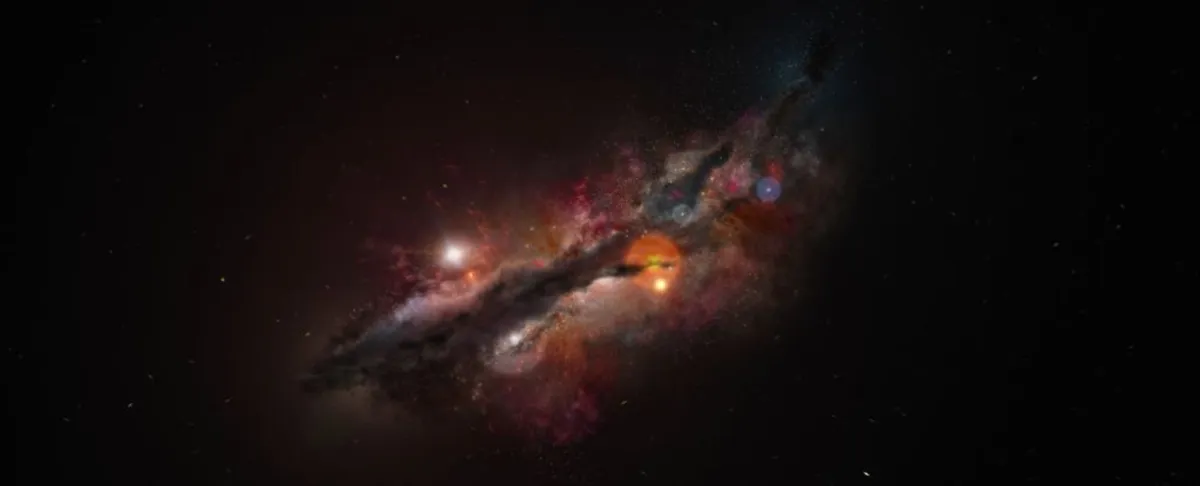
A recently discovered galaxy, JADES-GS-z14-0, has been observed shining brightly in the Cosmic Dawn, approximately 300 million years post-Big Bang. This astonishing find reveals that the galaxy is rich in oxygen, a discovery that challenges existing scientific theories. Scientists previously believed that elements heavier than hydrogen and helium were scarce in the early universe, not appearing in significant quantities until much later. This revelation indicates that the early universe matured at a pace far quicker than anticipated.
Cosmologist Sander Schouws from the Leiden Observatory in the Netherlands likens this discovery to "finding an adolescent where you would only expect babies." The findings suggest that JADES-GS-z14-0 has not only formed rapidly but is also evolving at an unprecedented rate. This adds to a growing body of evidence indicating that galaxy formation occurs much faster than previously theorized.
The existence of JADES-GS-z14-0 poses significant challenges to current cosmological models, which suggest that galaxies require extensive time to grow. For the galaxy to be detectable from over 13.4 billion light-years away, it must be both large and bright—attributes that complicate existing explanations. Furthermore, the elements heavier than hydrogen and helium typically take time to develop through stellar processes.
In the aftermath of the Big Bang, the universe primarily consisted of hydrogen and helium. Over time, gravitational forces caused gas to collapse, leading to the formation of the first stars. Through the process of stellar core fusion, these stars created heavier elements, including oxygen. However, for these elements to be released into space, stars must complete their life cycles and explode in supernovae. While the most massive stars can exist for less than 10 million years, the results from JADES-GS-z14-0 indicated an oxygen presence ten times greater than predicted.
Astrophysicist Stefano Carniani from the Scuola Normale Superiore in Italy expressed astonishment at the unexpected findings, which provide a new perspective on the initial phases of galaxy evolution. The maturity of this galaxy in the infant universe raises critical questions regarding the timeline and processes of galaxy formation.
The expansion of space causes light from distant galaxies to stretch into red wavelengths due to the Doppler effect. The James Webb Space Telescope (JWST), the most powerful infrared space telescope ever built, is optimized for detecting these redshifted objects. Since its launch, astronomers have discovered numerous large galaxies significantly earlier in the universe than previously expected, painting a new picture of how the early universe evolved within the first billion years post-Big Bang.
The discovery of oxygen in JADES-GS-z14-0 adds another piece to the puzzle, suggesting that galaxies grew and evolved at a pace previously thought impossible in the early universe. As scientists work to understand how this rapid growth impacts the cosmological timeline, it becomes evident that many of our assumptions about the early universe may need to be reassessed. This exciting development opens new avenues of research and inquiry into the origins of galaxies and the evolution of the cosmos.